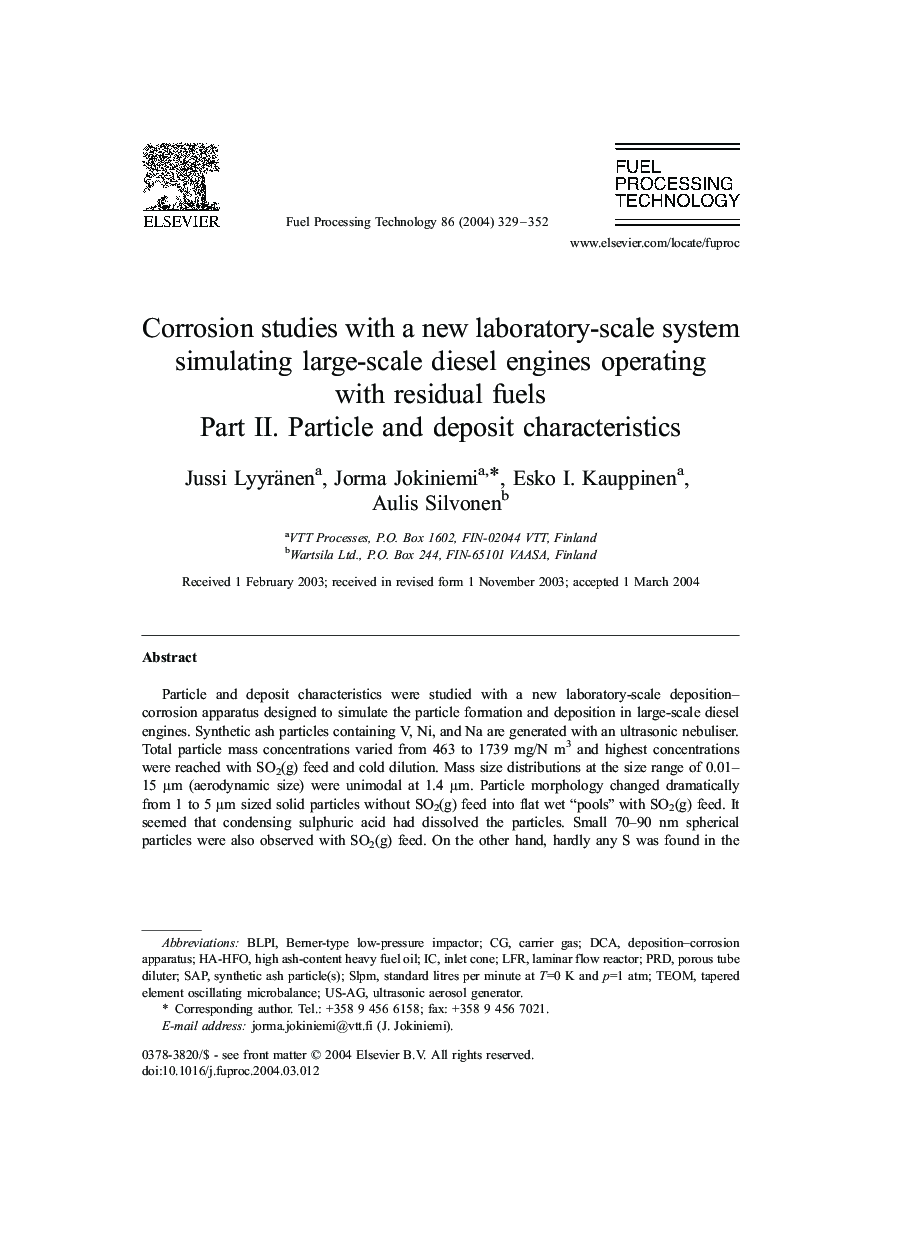| Article ID | Journal | Published Year | Pages | File Type |
|---|---|---|---|---|
| 10274914 | Fuel Processing Technology | 2005 | 24 Pages |
Abstract
Particle and deposit characteristics were studied with a new laboratory-scale deposition-corrosion apparatus designed to simulate the particle formation and deposition in large-scale diesel engines. Synthetic ash particles containing V, Ni, and Na are generated with an ultrasonic nebuliser. Total particle mass concentrations varied from 463 to 1739 mg/N m3 and highest concentrations were reached with SO2(g) feed and cold dilution. Mass size distributions at the size range of 0.01-15 μm (aerodynamic size) were unimodal at 1.4 μm. Particle morphology changed dramatically from 1 to 5 μm sized solid particles without SO2(g) feed into flat wet “pools” with SO2(g) feed. It seemed that condensing sulphuric acid had dissolved the particles. Small 70-90 nm spherical particles were also observed with SO2(g) feed. On the other hand, hardly any S was found in the deposits, which indicated that S as SO2(g)/SO3(g) was transported through the deposit pile into the base material.
Keywords
Related Topics
Physical Sciences and Engineering
Chemical Engineering
Chemical Engineering (General)
Authors
Jussi Lyyränen, Jorma Jokiniemi, Esko I. Kauppinen, Aulis Silvonen,
